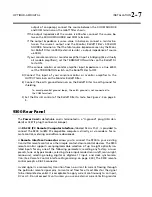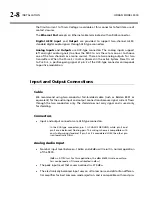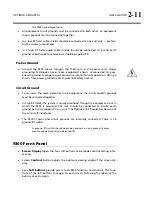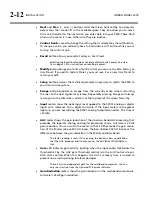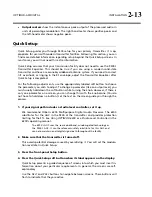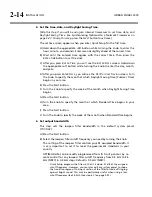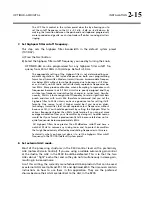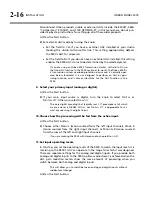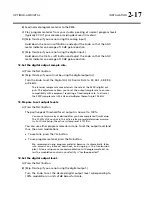
2-10
INSTALLATION
ORBAN MODEL 9300
to the pin on the XLR-type connector (#3 or #2) that is considered
L
OW
by the
standards of your organization.
AES3 Digital Input and Output
There is one AES3 input and one AES3 output. The program input and output are
both equipped with sample rate converters and can operate at 32, 44.1, 48, 88.2,
and 96 kHz.
Per the AES3 standard, each digital input or output line carries two
channels. The input accepts stereo, which the 9300 can process as mono-
from-left, mono-from-right, or mono-from-sum. The output carries two
identical mono-processed channels.
The connection is 110
balanced. The AES3 standard specifies a maxi-
mum cable length of 100 meters. While almost any balanced, shielded
cable will work for relatively short runs (5 meters or less), longer runs re-
quire used of 110
balanced cable like Belden 1800B, 1801B (plenum rat-
ed), multi-pair 180xF, 185xF, or 78xxA. Single-pair category 5, 5e, and 6
Ethernet cable will also work well if you do not require shielding. (In
most cases, the tight balance of Category 5/5e/6 cable makes shielding
unnecessary.)
The AES3id standard is best for very long cable runs (up to 1000 meters).
This specifies 75
unbalanced coaxial cable, terminated in BNC connec-
tors. A 110
/75
balun transformer is required to interface an AES3id
connection to your Optimod’s digital input or output.
The digital input clip level is fixed at 0 dB relative to the maximum digital
word. The maximum digital input will make the 9300 input meters dis-
play 0dB. The reference level is adjustable using the
DI
R
EF
control.
The 9300 is a “multirate” system; its internal sample rate is 32 kHz and
multiples thereof (up to 128 kHz). The output is strictly band-limited to
16 kHz or less. Therefore, the output can pass through a 32 kHz uncom-
pressed link with bit-for-bit transparency. Because sample rate conversion
is a phase-linear process that does not add bandwidth, the 9300’s output
signal will continue to be compatible with 32 kHz links even if it under-
goes intermediate sample rate conversions (for example, 32 kHz to 48
kHz to 32 kHz).
Grounding
Very often, grounding is approached in a “hit or miss” manner. But with care it is
possible to wire an audio studio so that it provides maximum protection from power
faults and is free from ground loops (which induce hum and can cause oscillation).
In an ideal system:
All units in the system should have balanced inputs. In a modern system with
low output impedances and high input impedances, a balanced input will pro-
vide common-mode rejection and prevent ground loops regardless of whether it
is driven from a balanced or unbalanced source.
Содержание OPTIMOD-AM 9300
Страница 1: ...Operating Manual OPTIMOD AM 9300 Digital Audio Processor Version 2 0 Software...
Страница 7: ...Operating Manual OPTIMOD AM 9300 Digital Audio Processor Version 2 0 Software...
Страница 178: ...3 46 OPERATION ORBAN MODEL 9300...
Страница 200: ......
Страница 221: ...OPTIMOD AM DIGITAL TECHNICAL DATA 6 21...
Страница 222: ...6 22 TECHNICAL DATA ORBAN MODEL 9300 CONTROL BOARD PARTS LOCATOR...
Страница 228: ...6 28 TECHNICAL DATA ORBAN MODEL 9300...
Страница 229: ...OPTIMOD AM DIGITAL TECHNICAL DATA 6 29 I O DSP BOARD LEFT AND RIGHT ANALOG INPUTS...
Страница 230: ...6 30 TECHNICAL DATA ORBAN MODEL 9300 I O DSP BOARD ANALOG OUTPUTS...
Страница 231: ...OPTIMOD AM DIGITAL TECHNICAL DATA 6 31...
Страница 238: ...6 38 TECHNICAL DATA ORBAN MODEL 9300 FRONT VIEW REAR VIEW FRONT PANEL PARTS LOCATOR DIAGRAM...
Страница 242: ...6 42 TECHNICAL DATA ORBAN MODEL 9300 NOTES...












